Alfa Romeo Junior vs Audi A3 Sportback - Differences and prices compared
Costs and Efficiency:
Price and efficiency are often the first things buyers look at. Here it becomes clear which model has the long-term edge – whether at the pump, the plug, or in purchase price.
Alfa Romeo Junior has a minimal advantage in terms of price – it starts at 26100 £, while the Audi A3 Sportback costs 26800 £. That’s a price difference of around 728 £.
Fuel consumption also shows a difference: Audi A3 Sportback manages with 1.10 L and is therefore decisively more efficient than the Alfa Romeo Junior with 4.80 L. The difference is about 3.70 L per 100 km.
As for range, the Alfa Romeo Junior performs significantly better – achieving up to 410 km, about 269 km more than the Audi A3 Sportback.
Engine and Performance:
Power, torque and acceleration are the classic benchmarks for car enthusiasts – and here, some clear differences start to show.
When it comes to engine power, the Audi A3 Sportback has a noticeable edge – offering 400 HP compared to 280 HP. That’s roughly 120 HP more horsepower.
In acceleration from 0 to 100 km/h, the Audi A3 Sportback is convincingly quicker – completing the sprint in 3.80 s, while the Alfa Romeo Junior takes 5.90 s. That’s about 2.10 s faster.
In terms of top speed, the Audi A3 Sportback performs somewhat better – reaching 250 km/h, while the Alfa Romeo Junior tops out at 206 km/h. The difference is around 44 km/h.
There’s also a difference in torque: Audi A3 Sportback pulls noticeable stronger with 500 Nm compared to 345 Nm. That’s about 155 Nm difference.
Space and Everyday Use:
Beyond pure performance, interior space and usability matter most in daily life. This is where you see which car is more practical and versatile.
Seats: offers more seating capacity – vs .
In curb weight, Audi A3 Sportback is minimal lighter – 1360 kg compared to 1380 kg. The difference is around 20 kg.
In terms of boot space, the Alfa Romeo Junior offers hardly perceptible more room – 415 L compared to 380 L. That’s a difference of about 35 L.
In maximum load capacity, the Alfa Romeo Junior performs hardly perceptible better – up to 1280 L, which is about 80 L more than the Audi A3 Sportback.
When it comes to payload, Audi A3 Sportback slightly takes the win – 480 kg compared to 420 kg. That’s a difference of about 60 kg.
Who comes out on top?
Overall, the Audi A3 Sportback shows itself to be is largely superior and secures the title of DriveDuel Champion.
It convinces with the more balanced overall package and proves to be the more versatile choice for everyday use.
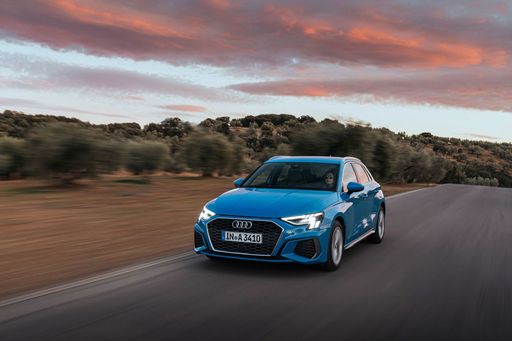 @ Audi AG
@ Audi AG
Audi A3 Sportback
Costs and Consumption
View detailed analysis
Engine and Performance
View detailed analysis
Dimensions and Body
View detailed analysis
Alfa Romeo Junior
The Alfa Romeo Junior captures the essence of Italian design with its sleek lines and compact dimensions, making it an icon of elegance and performance. With a spirited driving experience and a charming retro aesthetic, it appeals to enthusiasts and casual drivers alike. This delightful car embodies the brand's rich heritage while remaining a fun and engaging option for those seeking a unique automotive experience.
details @ Alfa Romeo / Stellantis Media
@ Alfa Romeo / Stellantis Media
 @ Alfa Romeo / Stellantis Media
@ Alfa Romeo / Stellantis Media
 @ Alfa Romeo / Stellantis Media
@ Alfa Romeo / Stellantis Media
Audi A3 Sportback
The Audi A3 Sportback wraps premium materials and crisp German design into a practical hatchback package that makes daily driving feel smart rather than showy. It’s nimble in the city, composed on longer trips, and carries just enough swagger to satisfy buyers who want quality without shouting about it.
details @ Audi AG
@ Audi AG
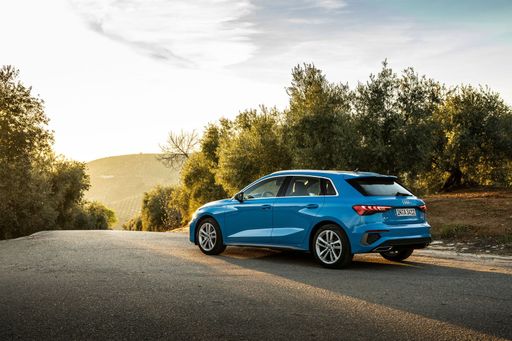 @ Audi AG
@ Audi AG
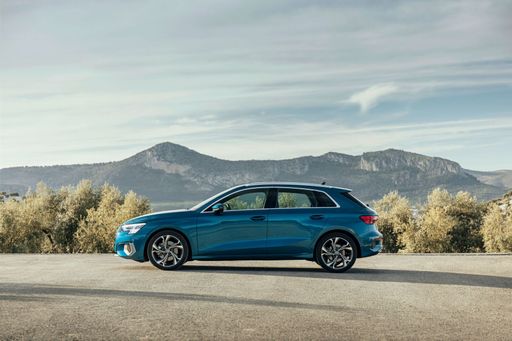 @ Audi AG
@ Audi AG
 @ Audi AG
@ Audi AG
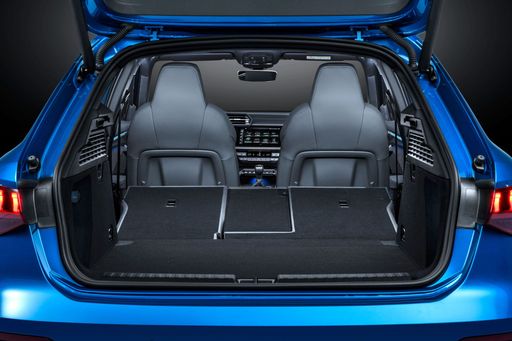 @ Audi AG
@ Audi AG
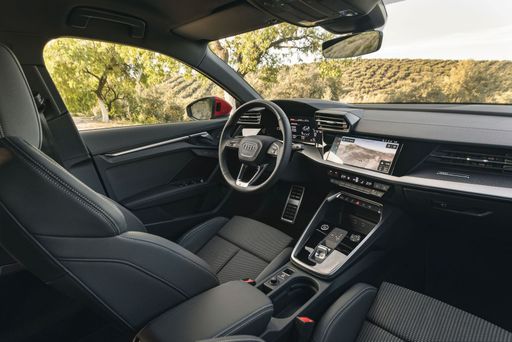 @ Audi AG
@ Audi AG
 @ Alfa Romeo / Stellantis Media
@ Alfa Romeo / Stellantis Media
|
 @ Audi AG
@ Audi AG
|
|
|
|
Costs and Consumption |
|
|---|---|
|
Price
26100 - 41600 £
|
Price
26800 - 56600 £
|
|
Consumption L/100km
4.8 - 5.4 L
|
Consumption L/100km
1.1 - 9.3 L
|
|
Consumption kWh/100km
15.1 - 17.5 kWh
|
Consumption kWh/100km
-
|
|
Electric Range
344 - 410 km
|
Electric Range
134 - 141 km
|
|
Battery Capacity
0.4 - 51 kWh
|
Battery Capacity
19.70 kWh
|
|
co2
0 - 119 g/km
|
co2
25 - 211 g/km
|
|
Fuel tank capacity
44 - 45 L
|
Fuel tank capacity
40 - 55 L
|
Dimensions and Body |
|
|---|---|
|
Body Type
SUV
|
Body Type
Hatchback
|
|
Seats
5
|
Seats
5
|
|
Doors
5
|
Doors
5
|
|
Curb weight
1380 - 1689 kg
|
Curb weight
1360 - 1685 kg
|
|
Trunk capacity
340 - 415 L
|
Trunk capacity
280 - 380 L
|
|
Length
4173 mm
|
Length
4352 - 4381 mm
|
|
Width
1781 mm
|
Width
1816 - 1851 mm
|
|
Height
1505 - 1538 mm
|
Height
1415 - 1470 mm
|
|
Max trunk capacity
1205 - 1280 L
|
Max trunk capacity
1100 - 1200 L
|
|
Payload
390 - 420 kg
|
Payload
410 - 480 kg
|
Engine and Performance |
|
|---|---|
|
Engine Type
Electric, Petrol MHEV
|
Engine Type
Petrol, Petrol MHEV, Diesel, Plugin Hybrid
|
|
Transmission
Automatic
|
Transmission
Manuel, Automatic
|
|
Transmission Detail
Reduction Gearbox, Dual-Clutch Automatic
|
Transmission Detail
Manual Gearbox, Dual-Clutch Automatic
|
|
Drive Type
Front-Wheel Drive, All-Wheel Drive
|
Drive Type
Front-Wheel Drive, All-Wheel Drive
|
|
Power HP
136 - 280 HP
|
Power HP
116 - 400 HP
|
|
Acceleration 0-100km/h
5.9 - 9.1 s
|
Acceleration 0-100km/h
3.8 - 10.1 s
|
|
Max Speed
150 - 206 km/h
|
Max Speed
205 - 250 km/h
|
|
Torque
230 - 345 Nm
|
Torque
220 - 500 Nm
|
|
Number of Cylinders
3
|
Number of Cylinders
4 - 5
|
|
Power kW
107 - 207 kW
|
Power kW
85 - 294 kW
|
|
Engine capacity
1199 cm3
|
Engine capacity
1498 - 2480 cm3
|
General |
|
|---|---|
|
Model Year
2024 - 2025
|
Model Year
2025
|
|
CO2 Efficiency Class
A, C, D
|
CO2 Efficiency Class
D, F, E, G, B
|
|
Brand
Alfa Romeo
|
Brand
Audi
|
What drive types are available for the Alfa Romeo Junior?
Available configurations include Front-Wheel Drive or All-Wheel Drive.
The prices and data displayed are estimates based on German list prices and may vary by country. This information is not legally binding.
